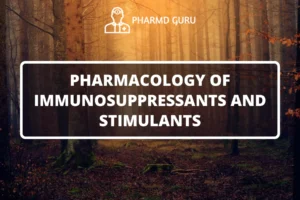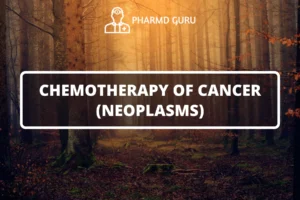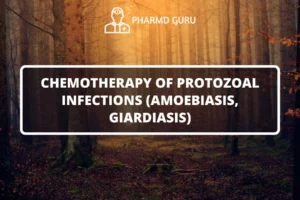CHEMOTHERAPY OF TUBERCULOSIS AND LEPROSY
Tuberculosis (TB) and leprosy are two bacterial infections caused by the Mycobacterium tuberculosis and Mycobacterium leprae bacteria, respectively. These diseases have significant global health implications and require effective treatment to prevent their spread and minimize the associated morbidity and mortality. Chemotherapy plays a crucial role in the management of tuberculosis and leprosy, offering therapeutic options that help combat these infections. In this article, we will explore the chemotherapy regimens used for the treatment of tuberculosis and leprosy, including the drugs involved, treatment duration, potential side effects, and the importance of adherence to treatment protocols.
SCROLL DOWN TO THE BOTTOM OF THIS PAGE FOR ACTUAL NOTES.
TABLE OF CONTENTS:
- Introduction
- Tuberculosis: Chemotherapy Overview
- First-Line Antitubercular Drugs
- Multidrug-Resistant Tuberculosis (MDR-TB)
- Leprosy: Chemotherapy Overview
- Multidrug Therapy (MDT) for Leprosy
- Potential Side Effects
- Adherence to Treatment
Introduction
Tuberculosis and leprosy are chronic infectious diseases caused by mycobacteria. They primarily affect the respiratory system and peripheral nerves, respectively, and can cause a range of symptoms, from mild to severe. Chemotherapy is the mainstay of treatment for both diseases, involving the use of specific drugs to target the mycobacterial infections.
Tuberculosis: Chemotherapy Overview
Chemotherapy for tuberculosis involves the administration of a combination of drugs to combat the Mycobacterium tuberculosis bacteria. The most common and effective approach is known as Directly Observed Treatment, Short-course (DOTS). This strategy ensures the proper administration and adherence to the treatment regimen, typically lasting for six to nine months.
First-Line Antitubercular Drugs
The first-line antitubercular drugs used in the treatment of tuberculosis include:
- Isoniazid (INH): A key component of tuberculosis treatment, INH targets the actively dividing mycobacteria by inhibiting the synthesis of mycolic acid, a vital component of their cell wall.
- Rifampicin (RIF): This drug also targets the cell wall synthesis of mycobacteria but acts by inhibiting RNA synthesis, thereby disrupting protein production.
- Pyrazinamide (PZA): PZA works by disrupting the energy metabolism of mycobacteria, specifically targeting those that are in a dormant state.
- Ethambutol (EMB): EMB inhibits the formation of the mycobacterial cell wall by blocking the synthesis of arabinogalactan, an essential component.
These drugs are typically administered in combination to prevent the development of drug resistance and achieve maximum efficacy.
Multidrug-Resistant Tuberculosis (MDR-TB)
Multidrug-resistant tuberculosis (MDR-TB) refers to strains of Mycobacterium tuberculosis that are resistant to both INH and RIF, two of the most potent first-line drugs. Treating MDR-TB requires the use of second-line antitubercular drugs, which are less effective, more toxic, and often more expensive. The treatment duration for MDR-TB is significantly longer, lasting up to two years or more.
Leprosy: Chemotherapy Overview
Leprosy, also known as Hansen’s disease, is caused by the Mycobacterium leprae bacteria. Chemotherapy for leprosy follows a multidrug therapy (MDT) approach, which combines specific drugs to target the mycobacteria and prevent the development of drug resistance. The MDT regimen consists of a combination of three drugs: dapsone, rifampicin, and clofazimine.
Potential Side Effects
Both tuberculosis and leprosy chemotherapy regimens can have potential side effects. These may include gastrointestinal disturbances, skin reactions, hepatic toxicity, hematological abnormalities, and peripheral neuropathy. However, the majority of these side effects are manageable and reversible. Regular monitoring and close medical supervision are essential to detect and address any adverse reactions promptly.
Adherence to Treatment
Adherence to the prescribed chemotherapy regimens for tuberculosis and leprosy is crucial for successful treatment outcomes. Skipping doses or prematurely discontinuing treatment can lead to treatment failure, relapse, and the development of drug-resistant strains of mycobacteria. It is important for healthcare providers to educate patients about the significance of adherence and provide appropriate support to ensure the completion of the full treatment course.
ACTUAL NOTES:




